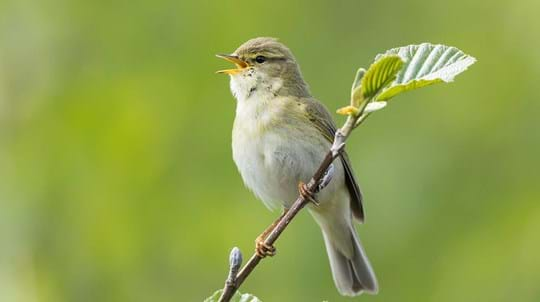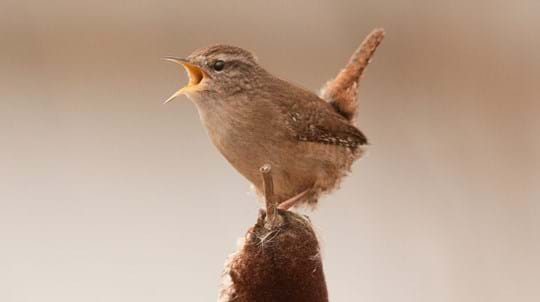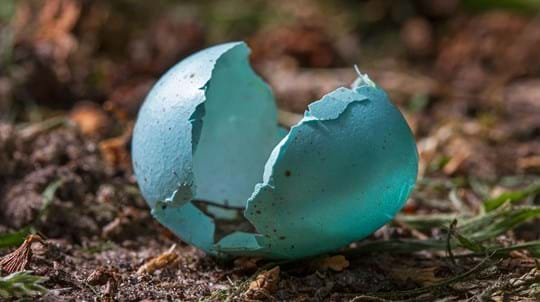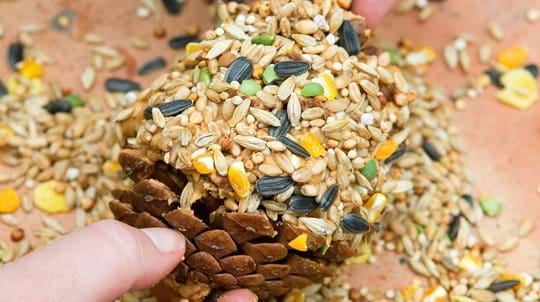
Credit: Blickwinkel / Alamy Stock Photo
What do chiffchaffs eat?
The chiffchaff feeds on insects and invertebrates. Flies, gnats, midges and caterpillars form a large part of its diet. Seeds and berries may be taken in winter.
A dainty warbler named after its song. Chiffchaffs are increasingly taking advantage of the UK’s warming climate by staying here all year long.
Common name: chiffchaff
Scientific name: Phylloscopus collybita
Family: Sylviidae (warblers)
Habitat: woodland, scrub, parks and gardens
Diet: invertebrates
Predators: sparrowhawks take adults; a range of predators may take eggs and chicks
Origin: native
The chiffchaff is a dainty bird that is among our smallest. It is predominantly a green-brown colour with dark legs and a pale stripe above the eye.
Not to be confused with: the willow warbler. These species look very similar, but the easiest way to tell them apart is by the legs. While the chiffchaff normally has dark legs, the willow warbler’s are a much lighter brown. Chiffchaffs also continually flick their tail, while willow warblers only do this occasionally.

Credit: Blickwinkel / Alamy Stock Photo
The chiffchaff feeds on insects and invertebrates. Flies, gnats, midges and caterpillars form a large part of its diet. Seeds and berries may be taken in winter.

Credit: Jose Luis Gomez De Francisco / naturepl.com
Chiffchaffs nest close to the ground in dense vegetation. Five to six eggs will normally be laid in May or June. The chicks will hatch after around two weeks and fledge two weeks later. Two broods may be raised each year.

Credit: John Bridges / WTML
Chiffchaffs can be found in most of the UK in spring and summer, apart from the most mountainous areas of Scotland. The species lives in woodland, scrub, parks and gardens.
Chiffchaffs may fly all the way to sub-Saharan Africa to overwinter – not bad for a bird that weighs less than a £1 coin.
Most of the UK’s chiffchaffs are summer migrants, breeding here before flying to warmer climes in autumn. However, an increasing number of birds are now staying in the UK all year round. It’s thought this is due to the country’s warming climate, which means the birds can survive the winter here. Up to 1,000 birds are now thought to spend the whole year in the UK.
Reporting when you first see a chiffchaff or if you see one during the winter can help us assess the impact of climate change on our wildlife. Head to Nature’s Calendar to learn more.

Credit: Kemphoto Animals Wildlife / Alamy Stock Photo
Look for chiffchaffs flitting between tree branches on the hunt for insects. Listen out for its distinctive ‘chiffchaff chiffchaff’ song from February onwards, which earned the species its name.
Audio: Alexander Lees / xeno-canto.org

Record the comings and goings of key feathered friends and help scientists track the effects of climate change on wildlife.
Take part in our Nature's Calendar surveyThe chiffchaff is a common bird with more than one million breeding in the UK annually. This represents an increase of more than 100% since 1970. The UK’s warming climate is thought to be an important factor in this growth.

Blog
Amy Lewis • 11 Apr 2022

Blog
Kayleigh Jacobs-Rutter • 13 Feb 2024

Blog
Helen Keating • 05 May 2020

Blog
Amy Lewis • 15 Jan 2019